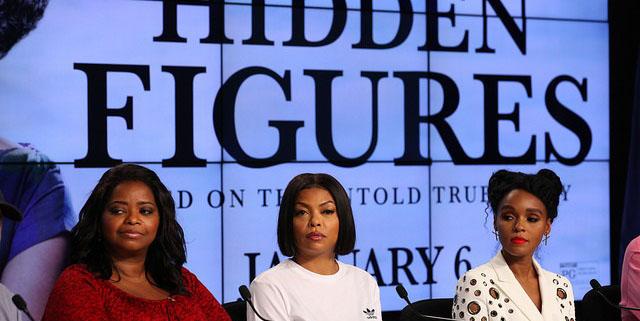
The Best Picture nominee about three black women working at NASA received an “unprecedented” response from foreign embassies. This inspired the State Department to launch #HiddenNoMore, an initiative aimed at cultivating the efforts and achievements of women in science, technology, engineering and math (STEM).
Hidden Figures, the historical drama about three black women who worked at NASA in the 1960s, has many plaudits to its name.
The critically acclaimed film starring Taraji P. Henson, Octavia Spencer, and Janelle Monáe was nominated for Best Picture at the 2017 Oscars. It was a box office hit, earning more than $230 million worldwide on a budget of $25 million. Its recounting of how Katherine Johnson, Dorothy Vaughan, and Mary Jackson broke racial and gender barriers during the height of the civil rights movement to help send mankind into space has been lauded for its deft portrayal of an important true story.
And now it has broken a barrier of its own by inspiring the US State Department to launch a first-of-its-kind, publicly funded educational exchange program for women.
According to the Hollywood Reporter, a new program called #HiddenNoMore will invite 50 women from 50 different countries to participate in a cultural and educational exchange aimed at cultivating the efforts and achievements of women in the science, technology, engineering, and math fields. Nominated participants will travel to the US in October and spend several weeks meeting with universities and women-oriented organizations like the Girl Scouts to discuss STEM-related subjects — including diversity. The idea is “to get people from diverse communities talking about these issues that are vital to long-term US security and prosperity,” Stacy White, office director of the State Department’s International Visitor Leadership Program, told THR.
According to White, after Hidden Figures’ wide release in January, the State Department was bombarded by requests from foreign embassies that wanted to screen the film, and it was eventually screened at an “unprecedented” 80 overseas locations. With #HiddenNoMore, “we really wanted to build on the momentum,” White said.
The gender imbalance in STEM fields is well-documented. As the World Economic Forum recently explained, women earn approximately one-third of the undergraduate degrees awarded in STEM fields in the US, “even though they account for almost 60 percent of college graduates.” And a 2010 report from the American Association of University Women stated that:
“In elementary, middle, and high school, girls and boys take math and science courses in roughly equal numbers, and about as many girls as boys leave high school prepared to pursue science and engineering majors in college. Yet fewer women than men pursue these majors.”
There’s also a racial disparity among women in STEM. In a 2009 study, the National Science Foundation found that while only 18 percent of employed scientists and engineers were white women, only 5 percent were Asian women, one percent were black women, and one percent were Hispanic women.
Statistics like these make it all the more clear why Hidden Figures’ story is such an important one to tell, and why the State Department’s #HiddenNoMore initiative could be a promising step toward getting more women into STEM.
Article courtesy of Abbey White via VOX.



Leave a Reply